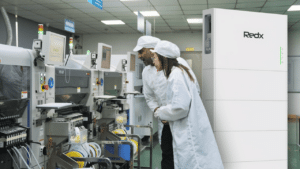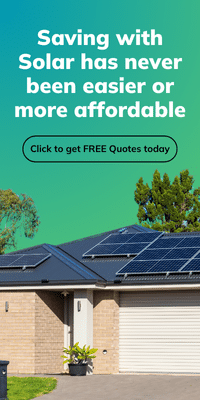Sustainable design is more than a buzzword; it’s a blueprint for living smarter, saving money, and reducing our environmental impact. Episode 4 of Energy Matters showcases this through Light House Architecture & Science’s project, ‘The Village,’ in Canberra. This innovative development transforms a single property into three energy-efficient homes, each exceeding a 7.6-star Energy Efficiency Rating (EER), significantly reducing heating and cooling energy needs compared to standard 6-star designs.
What is sustainable design?
Sustainable design integrates environmental considerations into building practices, aiming to minimise resource consumption and environmental impact. It encompasses energy efficiency, water conservation, and the use of sustainable materials, all while enhancing occupant comfort and well-being.
Affordable and premium sustainable choices
Budget-friendly options:
- LED lighting: Reduces energy consumption and lasts longer than traditional bulbs.
- Water-saving fixtures: Low-flow taps and showerheads conserve water without sacrificing performance.
- Insulation: Proper insulation maintains indoor temperatures, reducing heating and cooling costs.
Premium investments:
- Double-glazed windows: Enhance thermal performance and reduce noise.
- Solar panels and battery storage: Generate and store renewable energy, lowering electricity bills.
- High-efficiency appliances: Consume less energy, offering long-term savings.
Embracing passive design
Passive design leverages natural elements to maintain comfortable indoor temperatures, reducing reliance on mechanical heating and cooling. Key strategies include:
- Orientation: Positioning buildings to maximise natural light and heat from the sun.
- Thermal mass: Using materials that absorb and store heat energy.
- Ventilation: Facilitating natural airflow to cool and refresh indoor spaces.
In ‘The Village,’ Light House Architecture & Science applied these principles, resulting in homes that are comfortable year-round with minimal energy use.
Australian standards and regulations
In Australia, the National Construction Code (NCC) sets the minimum requirements for energy efficiency in buildings. The Nationwide House Energy Rating Scheme (NatHERS) provides a star rating (out of 10) based on a home’s design and predicted energy use. While a 7-star rating is the minimum, aiming for higher ratings can lead to significant energy and cost savings.
Solar energy and battery storage
Integrating solar panels and battery storage into home design is a cornerstone of sustainable living. Solar panels harness renewable energy, while batteries store excess power for use during peak times or outages. This not only reduces electricity bills but also enhances energy independence.
Starting 1 July 2025, the Australian federal government is introducing a battery rebate to encourage homeowners to adopt energy storage solutions. This initiative aims to make sustainable energy more accessible and affordable across the country.
Investing in the future
Sustainable design is an investment in the future, offering environmental benefits, cost savings, and improved quality of life. By learning from projects like ‘The Village’ and embracing both simple and advanced sustainable practices, Australians can build homes that are not only efficient but also resilient and comfortable.
Curious about renewable energy technology and products? Find out more in Energy Matters – watch on 9Now












































